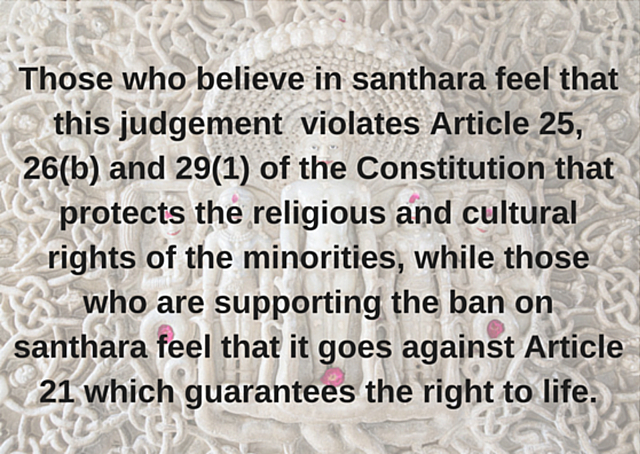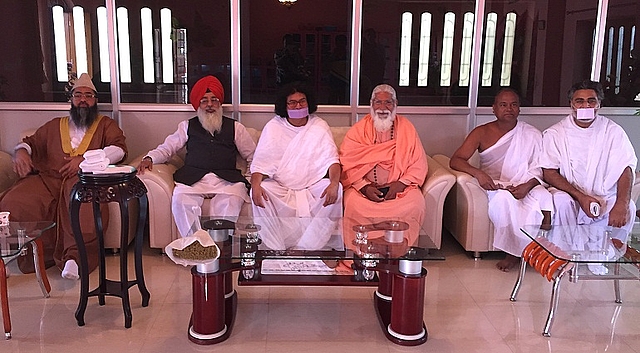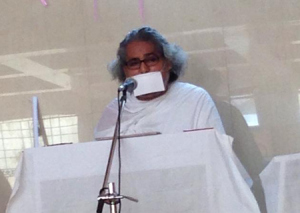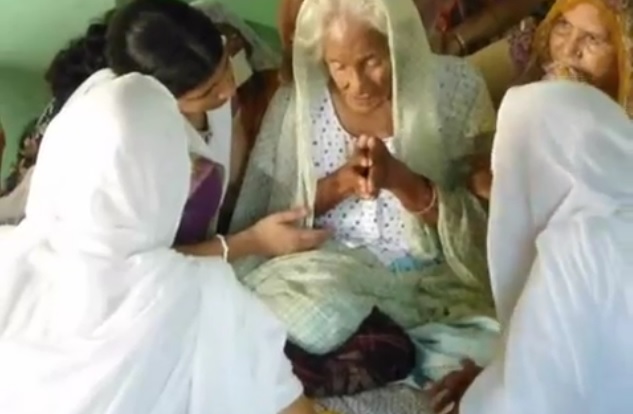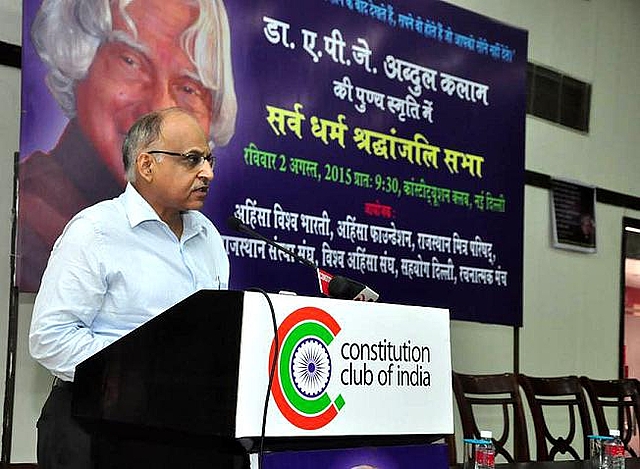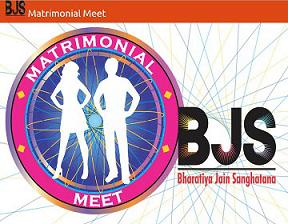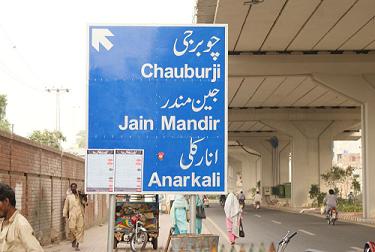|
CURRENT TOPIC....RAJASTHAN HIGH COURT DECISION ABOUT SANTHARA
RAJASTHAN HIGH COURT RAISE TREMORS IN JAIN COMMUNITY
The Rajasthan High Court judgment (Nikhil Soni vs. Union of India & Ors. Civil Writ Petition No.7414/2006) declaring the Jain practice of Santhara or Sallekhana illegal has drawn strong reactions from Jain community. The court has ruled that Santhara is not an “essential tenet” of Jainism and held it akin to suicide. A person undertaking Santhara does not eat or drink anything and as a result starves to death within a few days. The ritual is marked by great social and religious fervour and the person undertaking it is treated like a saint. The court has also declared the practice punishable under sections 306 and 309 of the Indian Penal Code.
The Rajasthan High Court on 10th August, 2015 declared the practice of ‘Santhara’ or ‘Sullekhana’, a Jain ritual of voluntary and systematic fasting to death as illegal, and directed the State to treat it as an offence punishable under section 309 of the Indian Penal Code and its abetment thereof under section 306 of the Indian Penal Code.
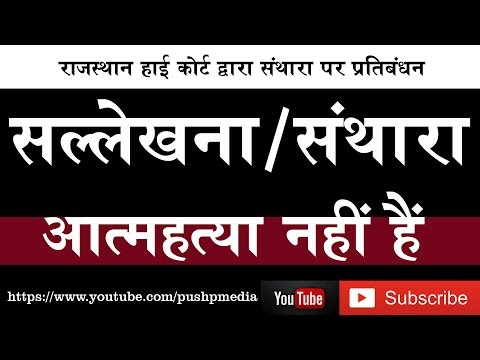 |
The ruling came in a PIL filed by Nikhil Soni who had sought a declaration that the practice is illegal on the ground that it amounted to suicide, which is a criminal offence and is punishable under section 309 IPC. No practice or belief or tenet, which is abhorrent to public order, morality and health and violates other provisions of the Part-III, namely, Article 21, can protect the religious practice. The petitioner describing the practice of Santhara as abhorrent to modern thinking, submitted that no religion howsoever historical, pure or revered, can permit or allow a person to commit death by choice. The fast until death is nothing but a self-destruction in whatever form and belief it may be, and that fundamental right to freedom of religion cannot protect a criminal act as it is subject to public order, morality and health.
The petitioner further contended that Jain religion cannot claim a practice however ancient it may be, as an essential part or belief or tenet, which is violative of the public order and morality accepted by the State under the provisions of law including in section 309 IPC. The right to his/her death cannot be treated as part of the tenet of the religion, as religion which takes life cannot be allowed to advocate that the taking of life in however purified form is a way of life, which is also an essential tenet of religion. It was also argued by the petitioner that though in Aruna Ramchandra Shanbaug V/s Union of India (supra), the Supreme Court left the question as to whether not taking food consciously and voluntarily with the aim to end one’s life is a crime, the substance of the judgments in Gian Kaur (supra) and Aruna Ramchandra Shanbaug (supra) is that no person has a right to take his own life consciously, as the right to life does not include the right to end the life voluntarily.
Justice Sunil Ambawani and justice VS Siradhana of the Rajasthan High Court, in his judgment, held that, "it was difficult to construe Article 21 to include within it the right to die’ as a part of the fundamental right guaranteed therein. ‘Right to life’ is a natural right embodied in Article 21 but suicide is an unnatural termination or extinction of life and, therefore, incompatible and inconsistent with the concept of right to life’, the Court said. The Rajasthan HC also added that the Constitution does not permit nor include under Article 21 the right to take one’s own life, nor can include the right to take life as an essential religious practice under Article 25 of the Constitution".
In its judgment, "the Court also said, that,the argument that Santhara or Sallekhana is an essential religious practice of the Jain religion, has not been established. The bench said: “We do not find that in any of the scriptures, preachings, articles or the practices followed by the Jain ascetics, the Santhara or Sallekhana has been treated as an essential religious practice, nor is necessarily required for the pursuit of immortality or moksha. There is no such preaching in the religious scriptures of the Jain religion or in the texts written by the revered Jain Munis that the Santhara or Sallekhana is the only method, without which the moksha is not attainable. There is no material whatsoever to show that this practice was accepted by most of the ascetics or persons following the Jain religion in attaining the nirvana or moksha. It is not an essential part of the philosophy and approach of the Jain religion, nor has been practiced frequently to give up the body for salvation of soul. It is one thing to say that the Santhara or Sallekhana is not suicide as it is a voluntary act of giving up of one’s body for salvation and is not violent in any manner, but it is another thing to say that it is permissible religious practice protected by Articles 25 and 26 of the Constitution of India.”
The Court accordingly allowed the writ petition with directions to the State authorities to stop the practice of ‘Santhara’ or ‘Sallekhana’ and to treat it as suicide punishable under section 309 of the Indian Penal Code and its abetment by persons under section 306 of the Indian Penal Code. The Court also declared that “Any complaint made in this regard shall be registered as a criminal case and investigated by the police, in the light of the recognition of law in the Constitution of India and in accordance with Section 309 or Section 306 IPC,in accordance with law.
The judgment of Rajasthan High Court questioning the traditional Jain Practice of Santhara / Sallekhana has definitely placed a question mark on our religious freedom. It’s definitely regrettable to note, “We failed to defend our faith in the Court of Law”. Poor management of a strategic issue like this has resulted into needless embarrassment for all of us. Anyway, the damage has been done. Now it’s the time to recognize the technicalities of the issue (Court Order).It is time to be one and be focused.
In situation like this, we have to deal with alien forces with humility and grace but with single strong resolution. It appears that, “Shortcut Remedy only rests in managing affectively and efficiently Indian Legal System”. A nation wide “Board” comprising of highly competent and knowledgeable legal personalities supported by Jains scholars, group of saints and media should be immediately constituted for this purpose. The issue is extremely technical. It will involve complicated implications in future.
However, it appears many ingenious individuals from legal profession are trying jump into the legal process to glorify themselves or pickup some financial benefit. It will be really hard for the community to restrain such elements. Caution is also required against sectarian attitude of legal representatives. Senior community members from legal profession should come forward as volunteers and accept this assignment as their duty and responsibility towards their society.
Our ascetics have major role in this delicate matter and should not be ignored. Draft petitions must be reviewed / vetted by Acharyas before filling.
WHY NIKHIL SONI FILED HIS PIL AGAINST SANTHARA PRACTICE
The Public Interest Litigation in this regard was filed by an Activist Advocate, Nikhil Soni in 2006. According to him, it was a childhood spent in witnessing old and terminally ill persons crying for help on empty stomachs. Often neighbours would have had to call in the police as the cry of these elderly became unbearable. As they died, they became revered and worshipped by Jain community.
 |
Surrounded by people of Jain community, Nikhil Soni's young days in Shekhawati, Rajasthan got etched in his mind. When he finally became a practising lawyer, it came naturally to him to fight against the religious practice of Santhara, practiced by the Jain community. He calls it a Social Evil. According to him, "it was painful to see that a terminally ill person who needed more care and medication was left alone to die in the name of Santhara or Sanlekhna. Many times, I heard stories that a person was tied to a chair in the name of Santhara and was not allowed to eat or drink. I discussed it with my seniors in September 2006 and was ready to file a public interest litigation against it. We were moved by these things happening around us in the society. We have pleaded before the court that Santhara or fast-unto-death is not an essential tenet of Jainism. We have also said in the court that religious practices which are violating public order, mortality and health have been rejected by the Supreme Court.
The Article 21 of Indian Constitution deals with the right to live. It does not include right to die; this analogy has been finalised through various constitutional bench judgments of Supreme Court, for example in Gyan Kaur case, Aruna Shanbaug case etc". In his PIL he has also cited that even the practice of 'Sati', another form of suicide earlier practiced by Hindu community, is banned in India now.
TEXT COPY OF RAJASTHAN HIGH COURT ORDER
1. In this writ petition filed under Article 226 of the Constitution of India in public interest, the petitioner, a practising lawyer at Jaipur Bench of the Rajasthan High Court, has prayed for directions to the Union of India through Secretary, Department of Home, New Delhi-respondent no.1 and the State of Rajasthan through Secretary, Department of Home, Secretariat, Rajasthan, Jaipur-respondent no.2, to treat “SANTHARA” or “SALLEKHANA” as illegal and punishable under the law of the land and that the instances given in the pleadings, be investigated and subjected to suitable prosecution of which, the abetment be also treated as criminal act.
 |
2. The “Santhara”, which means a fast unto death, is a practice prevalent in Shvetambara group of Jain community. According to the petitioner, it is a religious fast unto death on the pretext that when all purpose of life have been served, or when the body is unable to serve any purpose of life, the Santhara will obtain “Moksha” (salvation). A person, after taking vow of Santhara stops eating and even drinking water and waits for death to arrive. It is submitted that the Santhara is religious thought, which has no place under the law of the land. The Constitution of India guarantees right to life, and protects the life of an individual. The right to freedom of religion under Article-25 in Part-III-Fundamental Rights, is subject to public order, morality and health and to the other provisions of this Part, which includes Article 21. All persons are entitled to freedom of conscience and the right freely to profess, practice and propagate religion. A practice, however, ancient it may be to a particular religion, cannot be allowed to violate the right to life of an individual.
3. It is submitted that a voluntary fast unto death is an act of selfdestruction, which amounts to “suicide”, which is a criminal offence and is punishable under section 309 IPC with simple imprisonment for a term which may extend to one year or with fine or with both. The abetment of suicide is also punishable under section 306 IPC with imprisonment of the term which may extend to ten years and also liable to fine. “Suicide” means an intentional killing of oneself. Every act of self-destruction by a human being subject to discretion is, in common language described by the word “suicide” provided it is an intentional act of a party knowing the probable consequence of what he is about to do. Suicide is never to be presumed. Intention is the essential legal ingredient under section 309 IPC............................................. to read full text of the High Court Judgment, please click on the link herein belowhttp://rhccasestatus.raj.nic.in/smsrhcb/rhbcis/judfile.asp?ID=CW%20%20%20&nID=7414&yID=2006&doj=8/10/2015
REACTION TO RAJASTHAN HIGH COURT ORDER
JAIN SAINT SUPARSHAW SAGARJI OF DIGAMBER SECTKolkata: Jain saint Suparshaw Sagar, who came to Kolkata's famous Parshanath temple told that the Digambar Jain Samaj does not recognize the Rajasthan high court ban on santhara. We won't follow the court rule, it is plain and simple. We are guided by principles of the Jain samaj. If any digambar saint applies for santhara and it gets approval of a guru of the Jain samaj, no one can stop it. Any saint can decide to go through the process to achieve salvation. It may happen in Kolkata as well. The Digambar Jain Samaj sees the Rajasthan High Court order banning its religious ritual, santhara or fast unto death, as an interference in their religion.
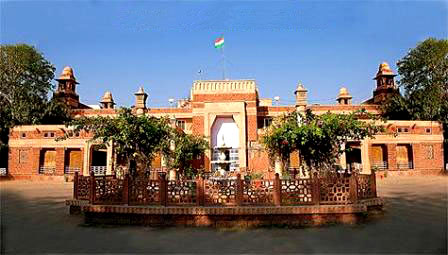 |
MUNISHRI PRAMAN SAGARJI MAHARAJ, A DIGAMBAR JAIN SAINT: Jaipur: Reacting to the ban on Santhara practice by the Jain community, Munishri Praman Sagarji Maharaj, a Digambar Jain saint, termed it "unfortunate" and said that the community will appeal against it in the Supreme Court within 90 days. He said, "It is unfortunate for many Jain sadhaks as it will affect their sadhana (meditation). This (Santhara) is not the kind of meditation the way it was projected in the court. "I have also learnt that the basis of this ban was that it was projected as equivalent to 'Sati Pratha'. I think people have not tabled the basic religious books in the court. To me, Santhara is the way of meditation till the last breath. It is a way of life for many Jain saints," Sagarji said. "I don't think Santhara is elaborated in the court properly. Thus I will urge the community to appeal against the court order in the upper court and the community will certainly file an appeal in the Supreme Court within 90 days," he added. On a question, he said, "Santhara Ichha Mrityu Mahin Hai, Yeh Ek Saadhna Hai (Santhara is not the ability to die when one wants; it is a way of meditation). The Jain community doesn't accept any kind of death," he added. Hemant Sogani, a senior advocate at the Rajasthan High court, said, "Some Jain sects were not made party in this PIL."
RELIGIOUS LEADERS OF DIFFERENT FAITHS ON ONE PLATFORM TO SUPPORT SANTHARA
New Delhi, 12 August 2015: Conference to support age old religious practice of Jain Religion ‘Santhara’ was organized at India International Center in the auspicious presence of Acharya Dr. Lokesh Muni and prominent religious leaders from different faiths. It is noteworthy that few days back Rajasthat High Court passed an order banning Jain practice of ‘Santhara’.
|
Eminent Jainacharya and founder of Ahimsa Vishwa Bharti addressing the conference said that Constitution of India has given freedom to all the religions to carry out their religious practices. Santhara is part of Jain religious practice and sadhna. He also quoted section 306 and 309 under which Santhara cannot be considered suicide. Acharya Lokesh stating that Rajasthan High Court order is unfortunate said that Santhara is not suicide. Sucide is done by a person obsessed with the feeling of fury, impulse, tension, frustration, disappointment, depression etc.
President of Bhrigu foundation from Hindu religion Goswami Sushil ji Maharaj said that how can the Court decide about our religious values of sacrifice and tapasya? How can the thousands of years old tradition be considered suicide? He said that through tapasya a person reaches his/her destiny. Santhara is a traditional way of worship in accordance with Jain Agams. Eminent leader Acharya Vinoba Bhave also followed this tradition.
Maulana Kalbe Rusah Rizvi said that banning Santhara is an attack on more than thousands of years old religious tradition. This is disappointing for all the religions. President of All India Imam Organisation Imam Umer Illiyasi said that lakhs of people are falling ill and dying due to consumption of liquor, drugs, tobacco etc. lakhs of animals are dying due to cruelty. This cannot be stopped inspite of many laws, then considering great Jain tradition of Santhara as sucide is highly disappointing.
President of Bangla Sahib Gurudwara Shri Paramjeet Singh Chandok and Guru Isaac Malekar from Jew religion also expressed their disappointment on Rajasthan Court order and said it is an attack on religion. They demanded that Central Government should intervene in this matter. Source: Kenu Agarwal, Media Secretary, 9811025332
RAJ. HOME MINISTER KATARIA PAINED HIGH COURT DECISION
Rajasthan Home Minister Gulab Chand Kataria has said that while he, as a Jain himself, was pained by the criminalisation of Santhara-the ritual of voluntarily embracing death-he would not comment on the propriety of either the high court judgment, or the practice, in his capacity as a minister in the state government.
|
Kataria also ruled out the Rajasthan government moving the Supreme Court against the High Court judgment criminalising Santhara and making it punishable under sections 306 and 309 of the IPC.
“As a Jain, I find it unfortunate. We (members of the Jain community) will appeal against the decision. But the government does not have anything to do with it. He said that like other members of the Jain community, he too was outraged by the HC order, but in his capacity as a minister, he would not have anything to do with the issue. It has been going on since the time of Mahavir Swami. When saints thought they had lived their lives and were free from desire, they would embrace Santhara. The Jain community across the country is pained by this decision and so am I, as a Jain. But as a minister, I am distant from the debate. I don’t know what Santhara is and hold no opinion for or against it, like any non-Jain would.
संथारा पर रोक के खिलाफ इंदौर दिगंबर-श्वेतांबर जैन समाज एक जुट
इंदौर। राजस्थान हाई कोर्ट के संथारा पर रोक लगाने के फैसले के खिलाफ बुधवार को जैन समाज में बैठकों का दौर चलता रहा। बैठक में श्वेतांबर और दिगंबर जैन समाज ने राष्ट्रीय स्तर की कमेटी बनाकर सुप्रीम कोर्ट में अपील करने का निर्णय लिया।
दिगंबर जैन प्रतिनिधि मंडल के मुनि समयसागरजी की बैठक में देशभर के संगठनों को एक मंच पर लाकर आचार्य विद्यासागरजी के साथ चर्चा करने का निर्णय लिया गया।
मप्र जैन अल्पसंख्यक वेलफेयर कमेटी ने डिप्टी कमिश्नर को राष्ट्रपति के नाम ज्ञापन भी सौंपा। स्थानकवासी जैन युवक संघ द्वारा 13 अगस्त को राजवाड़ा चौक पर श्रमण संघीय उपाध्याय प्रवर जितेंद्रमुनिजी की मौजूदगी में हस्ताक्षर अभियान चलाया जाएगा। -नप्र
संथारा जैन धर्म की आगमसम्मत प्राचीन तप-आराधना: दिनेष मुनि
षिर्डी - 11 अगस्त 2015। द्वार पर दस्तक देती मृत्यु का सहर्ष आलींगन करना संथारा है। जैन धर्म में मृत्यु को महोत्सव कैसे बनाया जाए यह साधना पद्धति बताई गई है। राजस्थान कोर्ट द्वारा लगाई गई धर्म साधना पद्धति पर रोक निंदनीय है। स्वतंत्र देष में स्वतंत्र नागरिको को अपने अपने धर्म की उपासना - साधना करने का अधिकार है। और जैन धर्म में आत्महत्या को बुरा कृत्य माना गया है। आत्महत्या करने का विचार भी जैन धर्म में वर्जित है। इसके लिए प्रयास करना तो बहुत ही अधिक निन्दनीय माना गया है। उपरोक्त विचार श्रमण संघीय सलाहकार दिनेष मुनि षिर्डी के जैन स्थानक में ‘जैन धर्म में संथारा का महत्त्व’ विषय पर श्रद्धालुजनो को संबोधित कर रहे थे। उन्होनें कहा कि उत्तराध्ययन सूत्र के 36 वें अध्ययन की 268 वीं गाथा में लिखा है, ‘शस्त्र प्रयोग, विष भक्षण, अग्निप्रवेश, जल प्रवेश आदि अनाचरणीय साधनों का सेवन करते हुए जो व्यक्ति अपनी जीवन-लीला का समापन करते हैं वे जन्म और मरण के बंधनों को सदा के लिए बांध लेते हैं।
|
इस विषय को विधिक दृष्टि से स्पष्ट करने के लिए जस्टिस टी. के. टुकोल (1908-1983) ने 1976 में एक पुस्तक लिखी, जिसका नाम है - सल्लेखना इज नोट सुसाइड (संलेखना आत्महत्या नहीं है)। यह पुस्तक एल. डी. इंस्टीट्यूट आॅफ इंडोलोजी, अहमदाबाद में 1975 में हुए उनके व्याख्यान पर आधारित उनके व्याख्यान का अभिवर्द्धित रूप है।
जैन धर्म में उस प्रत्येक कार्य को पाप कहा गया है जिसके पीछे तीव्र वैर-भाव, भय शोक, आसक्ति, क्रोध, लोभ आदि भाव छिपे होते हैं। आत्महत्या के पीछे भी यही कुछ भाव प्रेरक रूप में छिपे रहते हैं। अतः आत्महत्या को जैन धर्म में सामान्य पाप न कहकर महापाप कहा गया है। जब कोई साधक संन्यास धर्म में प्रवेश करता है तब वह नाना प्रकार के नियमों का पालन करने की प्रतिज्ञा करता है। जैन साधना में ब्रह्मचर्य पालन, रात्रि भोजन का त्याग, नंगे पैरों से विहार, केश लोच, अल्प वस्त्र या अवस्त्र अवस्था आदि आवश्यक नियम होते हैं। इन सब का मुख्य उद्देश्य यही है कि शरीर से अत्यधिक आसक्ति न रहे और यह मन निर्द्वन्द्व और निश्चिन्त रहे।
कुछ लोगों के मस्तिष्क में यह भ्रान्ति घर कर गई है कि जैन धर्म जीवन-रक्षा के प्रति सावधान न होकर मरणोन्मुखता को प्रश्रय देता है। उनकी यह धारणा नितान्त निर्मूल है। क्योंकि, जैन धर्म तो सदा ही ‘जीओ और जीने दो’ का नारा देता रहता है। हां, यदि कभी देश, धर्म और आत्मा की रक्षा के लिए जीवन की आहुति देने का प्रसंग आया है तो उसमें भी जैनों ने अपनी वीरता का प्रदर्शन किया है। जैन धर्म की मान्यता रही है कि जीवन को शान से जीओ। संयम साधना और तपस्या से इसे चमकाओ और जब इससे विदा होने का अवसर आए तब भी हंसते-हंसते इस दुनिया से कूच कर जाओ। जीवन के साथ मृत्यु का अटूट सम्बन्ध है।
|
मृत्यु को भी जीवन्त बनाने की कला जैन धर्म में बताई गई है। उत्तराध्ययन सूत्र के 36 वें अध्ययन की 251 से 256 वीं गाथा तक इस प्रक्रिया को स्पष्ट किया गया है। जैन ग्रंथ आचारांग सूत्र, उŸाराध्ययन सूत्र, अन्तकृतदषा, भगवती आराधना तथा अन्य अनेक ग्रंथों में समाधिमरण के विधि-विधान के विस्तृत वर्णन मिलते हैं। संथारे का विधान मुनि और गृहस्थ, दोनों के लिए है। अनेक सन्तों, गृहस्थों और राजाओं के यादगार संथारों के उल्लेख इतिहास, जनश्रुतियों, लोक-चर्चाओं, अभिलेखों और पुस्तकों में मिलते हैं। भारत-रत्न आचार्य विनोबा भावे (1895-1982) ने जब जान लिया कि अब शरीर साथ देने वाला नहीं है, तब उन्होंने समस्त इच्छाओं, औषधियों और आहार का त्याग करके संथारा ग्रहण किया था। इतिहासकारों ने जैन मान्यता की पुष्टि की है कि सम्राट चन्द्रगुप्त मौर्य ने अपने धर्मगुरु भद्रबाहु स्वामी के सानिध्य में संलेखना व्रत स्वीकार किया था।
उल्लेखनीय है कि संथारा दो प्रकार का होता है - सागारी (छूट-सहित या सषर्त) और आजीवन। किसी आकस्मिक संकट के समय एवं शयन-पूर्व सागारी संथारा लिया जा सकता है। सागारी संथारे में संकट या मृत्यु टल जाने पर साधक पुनः अन्न-जल ग्रहण करता है और सामान्य जीवन जीता है। सागारी संथारे की चर्चा कम ही होती है, लेकिन अनेक सजग साधक इसे नित्य नियम की तरह ग्रहण करते हैं। संथारा देह की मृत्यु और आत्मा की अमरता की हमेषा याद दिलाता रहता है। अन्य दृष्टि से भी संथारा दो प्रकार का होता है - तिविहार और चैविहार संथारा। तिविहार संथारे में प्रासुक अचिŸा जल ग्रहण करने की छूट होती है। जबकि चैविहार संथारे में सभी प्रकार के अन्न-जल का पूर्ण त्याग कर दिया जाता है।
SHORT FILM ON SANTHARA BAGS SPECIAL JURY AWARD
A documentary on the Jain practice of Santhara, where a person takes a vow of abstinence and starves to death, has won a Special Jury award at the recently concluded Kolkata Shorts International Film Festival 2015. The 25-minute film has been written, directed and edited by Mumbai-based journalist-filmmaker Shekhar Hattangadi.
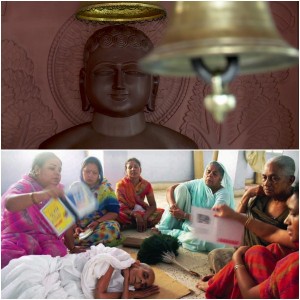 |
The film, 'Santhara', focuses on the conflict between a traditional religious practice and modern laws by exploring the spiritual, ethical, sociological and medico-legal aspects of santhara. It depicts the last moments in the life of a Jain nun who performed the ritual and is based on interviews with Jain religious scholars and community elders as well as legal experts and people who have filed a PIL calling for a ban on the practice. The film takes a look on how religion, law and constitutional secularism intersect in the ongoing debate on this centuries-old practice. "Santhara for me is a classic example of the challenge that all faith-based societies face as they adopt modern and secular norms of governance," Hattangadi said.
Hattangadi, who also teaches law, said the idea of making a documentary on this subject came from his classes. "My favorite subject to teach is constitutional law, though many students feel it is too abstract and difficult to comprehend. To dispel this wrong notion, I take news clippings on some controversial issues to class and, through the Socrates method of teaching, initiate a debate on the constitutionality of the issue," he said. "Some years ago, I took clippings on santhara to class. The debate revolved around the question of this practice violating Section 309 IPC (committing suicide) and Article 21 of the Constitution (right to life).
What came out was that defenders of the practice use the same Article 21 in their arguments, holding that right to life also guarantees right to terminate one's life," he said. Hattangadi travelled to Rajasthan several times to meet Jain religious and community leaders to learn about santhara.
JAIN MONK EMBRACES DEATH BY ‘SALLEKHANA’
Aug 14, 2015, Bhilai: An 87-year-old Jain monk embraced death at a Digambar Jain shrine near Gandhi Chowk at Durg in Chhattisgarh on 12th August after giving up food and water in keeping with the community tradition of 'sallekhana'. The monk, Adhyatma Sagar Maharaj of Tikamgarh district of Madhya Pradesh, died after five days and was cremated with hundreds of Digambar Jain community members accompanying his funeral procession. He began his fast on August 8, two days before Rajasthan high court declared the practice illegal. Referring to Rajasthan high court order of 10th August, declaring 'Santhara' as illegal, community members said the practice is not the same as suicide as it is a means to achieve salvation and the decision is taken with a calm mind. "It has nothing to do with law as it is based on religious belief and the court should have given an extra thought before calling it illegal," he said.
JAIN TABLETS REVEAL FAMILY SALLEKHANA
In a first in Jain culture, researchers have found evidence of six people of the same family having performed a sacrificial ritual called 'Sallekhana', or attaining spiritual liberation by fasting unto death.
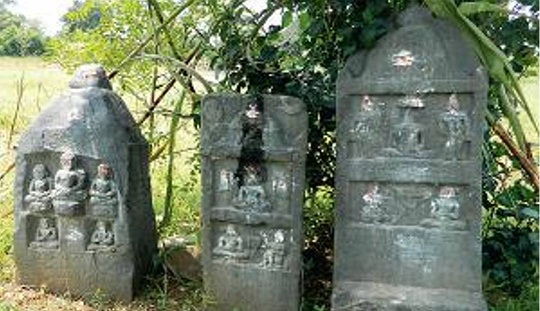 |
This happened in the 12th- 13th century AD but was discovered through Nishidi inscriptions which are erected in memory of those performing Sallekhana. These inscriptions were found in two different batches of three each with the first being discovered in Henuru village of Hanagal and Kadakola a few decades ago, and the second found just two months ago in Haveri, all in Karnataka. The first three Nishidi inscriptions were discovered during the British era but were published by Archaeological Survey of India (ASI) in 1975 in volume 18 of the book South Indian Inscriptions. The older inscriptions were already deciphered before being published. What is exciting is the fact that it is very rare to find more than one person of the same family performing the Sallekhana ritual, whereas here they are armed with proof of six persons of the same family who performed the ritual at different times all those centuries ago. The inscription does not give a specific date but can be dated to 12th-13th century AD. The second Nishidi is from the Saka Era 1189 corresponding to 1267 CE. It is 30x13 inches. It is the Nishidi of Marasoma, son of Kadakula (present Kadakola village) Deva Gavunda (Gowda). It says Marasoma is the disciple of Sri Nandi Bhattaraka of Moola Sangha's Surasta Gana.
CONFERENCES AND OTHER EVENT
JAIN SAMAJ HOLDS ALL-FAITH PRAYER MEETING FOR PREZ KALAM
Aug 2, 2015, New Delhi: All religions prayer meeting was organized to offer tribute to former President of India Dr. A. P. J. Abdul Kalam on 2nd August,15 at Constitution Club of India in the auspicious presence of Acharya Dr. Lokesh Muni in which religious leaders from different religions offered tribute to Dr. Kalam. The large gathering present at the prayer emotionally listened to Shri Srijan Pal Singh advisor of Dr. Kalam detailed narration of last few minutes with Dr. Kalam. The Prayer meeting was organized by Ahimsa Viswa Bharti and Ahimsa Foundation.
|
Prayer meet started with introductory speech and homage and tributes by Shri A. K. Jain, President of Ahimsa Foundation to Dr, Abdul Kalam. Thereafter, Ms. Neelam Singhvi, a well known name in Delhi Music Circle offered her tributes to Dr. Kalam through her musical composition. Acharya Dr. Lokesh Muni eminent Jainacharya and Founder of Ahimsa Vishwa Bharti remembering the famous lines by Dr. Kalam ‘Dream is not that you see in sleep, dream is something that does not let you sleep’ said that Dr. He said that Dr. Kalam was more of a spiritual person than a scientist. He will be remembered as the coordinator of the century between spirituality and science. Goswami Sushil Ji Maharaj founder of Bhrigu Foundation said that Dr. A. P. J. Abdul Kalam was the President of the common people. He opened doors of Rashtrapati Bhawan for the people and established dialogue with them. Maulana Kalbe Rusad Rizvi from Islam religion said that he believed in religion of humanity, Dr. Kalam said that we are first humans and then Hindu or Muslim.
Shri Vivek Muniji Maharaj of Vishwa Ahimsa Sangh paying tribute to Dr. Kalam said that besides being a scientist he inspired society to follow the path of Non-violence, Peace and Harmony. Ezekiel Isaa Malekar from Jew religion said that he believed in interfaith harmony, he encouraged the people doing excellent work for different religions. Shri A. K. Merchant from Bahai religion said that along with being a famous scientist he was a polite person at heart, he put an end to many old fanatic traditions. Shri G. S. Cheema from Sikh religion said that Dr. Kalam always made efforts towards making the world a better place to live in. His Vision 2020 gave Indians a dream to look forward to. Father Bintoo from Christianity and Lama from Bodh religion recited interfaith prayers. Jammat-e-Islami Hind secretary Mohammad and Acharya Shailesh Tiwary expressed their views in the meeting. Smt. Sudhamai Raghunathan presented some encouraging incidents from the life of Dr. Kalam. Vote of Thanks was given by Shri Virendra Mehta, Trustee of Jain Temple, South Extension, New Delhi.
WORKSHOP FOR JAIN COMMUNITY TO KNOW BENEFITS OF MINORITY STATUS
Ujjain: Bharatiya Jain Sangthan Ujjain organized a workshop to make Jain community aware about the benefits can be obtained from minority status.
 |
Key speaker Sasha Jain addressed community people at Bada Upashray at Kharakuan and said that students of Jain community are provided scholarship and loans and subsidies to setup industry, business and agriculture. They were also informed about the grant and privileges provided on conduction of school, college, provisions for the security of religious spots, institutions and culture and special benefits for NGOs. BJS State secretary Virendra Nahar was chief guest on this occasion. Om Jain talked about the objectives and activities for the empowerment of the society. Minority and Tribal Welfare Department assistant director Ashok Mehta was special guest. He also informed about the various schemes launched for minority community.
BJS IS ORGANIZING JAIN MATRIMONIAL IN PUNE ON AUGUST 22, 2015
Professional Graduates, Post Graduates and highly educated youth can participants in this novel concept of Jain Matrimonial and Get-to-gather. BJS Founder Shri Shantilalji Muttha recently proposed alternative ways of marriage fixing which are gradually gaining acceptance from the community.
|
The alternative approach suggests that parents allow the young boys and girls to initiate the selection process for life partner. Boys and girls can select suitable candidates from their own community and parents can act as advisors and guide the youth aptly.
This novel concept states that only candidates will be provided entry to the “Jain Matrimonial Get-to-gather”. Candidates from across country will interact with each other, exchange thoughts and views and also spend time with each other to know each other better. BJS plans to conduct several activities during the program to help the candidates understand and know each other’s likes, dislikes, qualities, future plans, aspirations, talents and outlook towards life in a better way. This will held every candidate to shortlist four to five candidates of their choice during the event itself. After the program they can go back home and share their list of chosen candidates with their parents for taking the marriage related process further. For Registration http://bjsmm.bjsapps.com Contact:Shailesh Jain, 09425089627 or Savita Sutar, 020-41280011
AWARDS AND ACHIEVEMENTS
RAVI JAIN NAMED NEW TECHNOLOGY CHIEF BY VULCAN INC
 |
August 4, 2015: Vulcan Inc. has named a former Google executive, Ravi Jain, as its new Chief Technology Officer, responsible for leading technology strategy at Microsoft co-founder’s Paul Allen’s Seattle-based company, while also expanding Vulcan’s tech operations and development teams. Ravi Jain has spent the past 10 years at Google and the search giant’s former Motorola Mobility unit, focusing on mobile technologies, including mobile search syndication, location-based services and mobile projects in sub-Saharan Africa.
He launched and oversaw engineering efforts for Google’s mobile ads, which grew into a multi-billion dollar business. In addition to overseeing technology across the company, Vulcan says his responsibilities in the new role will include innovation and technology for Vulcan’s social-impact projects in climate and wildlife conservation, including the Great Elephant Census, Sea Around Us and Fin Print.
AHIMSA AND VEGETARIANISM
U. S. BASED DOCTORS' GROUP PROMOTING VEGANISM IN INDIA
July 29, 2015 New Delhi - A doctors group from the United States has initiated an India tour to propagate the benefits of a vegan life. In a country which is all too familiar with vegetarianism, promoting this seems an easy task but is actually tricky. Because, apart from not eating any meat products, going vegan means avoiding animal -based products too, like milk and eggs. So there goes your paneer and curd.
 |
Zeeshan Ali of the Physicians Committee for Responsible Medicine(PCRM), a nonprofit health organization in the U.S. established in 1985 which promotes veganism, however, says that a plant-based diet has been clinically proven to reduce the risk of chronic diseases and reduces your metabolic risks. A low-fat vegan diet, combined with a nutrition education program, is clinically proven to boost weight loss, lower blood pressure, improve total cholesterol, restore insulin function, alleviate chronic pain, particularly headaches, migraines and joint pain," Ali told IANS in an e-mail interview. It also boosts your mood and combats chronic fatigue. Plant-based dietary patterns are associated with a reduced risk for certain forms of cancer and Alzheimer's disease,” he added.
But what about adequate nutrition? Ali however chalks out alternatives. "A plant-based vegan diet provides an abundance of micronutrients we often fall short on while ensuring adequate intake of the three macronutrients: carbohydrates, protein and fat. We recommend 80 percent of calories come from carbohydrates; 10 percent from fat; and 10 percent from protein. "Choosing colorful, low-fat, plant-based foods often ensures this ratio, or a comparable one that will leave you feeling great. Especially good protein sources include whole-wheat pasta, ancient grains, beans, peas and lentils, and even leafy greens like spinach and broccoli," he added. Where milk consumption is considered essential for children's development, Ali says that kids should also be encouraged to take up veganism and thereby a healthier lifestyle. "As the father of two children, I can speak first-hand about the health benefits of a plant-based vegan diet for our next generation. Both my kids enjoy plant-based vegan food and have a clean bill of health," he says. "A public school in New York City recently re-modeled its lunch room to offer students daily access to vegetarian foods, salad bars and plant-based proteins like chickpeas and tofu. The results are astounding. The students lost weight, attendance and energy levels in classrooms soared, and test scores rose to an all-time high. This is just one anecdote to support a large body of research that shows a vegetarian diet is a healthful choice at every stage of life, especially for children and teens." A diet centered on vegetables, fruits, whole grains and legumes provides one with stable energy throughout the day and boosts the immune system. "This is why many Hollywood stars like Beyoncé and Natalie Portman, professional athletes, global leaders and now even Bollywood actors are going vegan. A colorful diet ensures they can perform their best, whether it's filming for 20 hours or embarking on a world tour."
The six-city Building a Healthy India tour began in Bhopal June 25 and is traveling to Hyderabad, Bangalore, Mumbai, Chennai and finally Delhi July 6. The event also has the support of nonprofit organizations like SHARAN and India's Freedom from Diabetes Clinic. Courtesy: Dr. Sulekh C. Jain, Houston, Texas, USA, Home: 281-494-7656, Cell: 832-594-8005, E-Mail:
CHATURMAS LIST
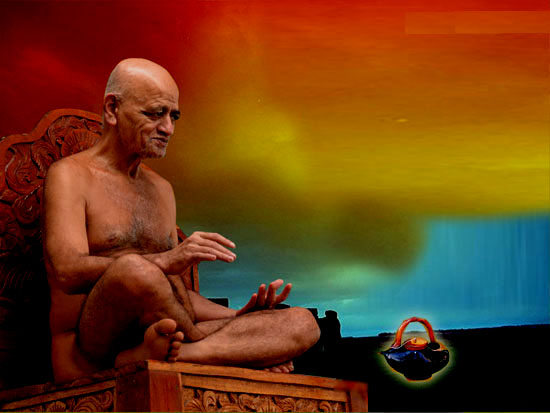 |
DIGAMBER SECT CHATURMAS - 2015 DESTINATIONS
o आचार्य श्री विद्यानन्द जी महाराज - कुन्द कुन्द भारती (दिल्ली)
o आचार्य श्री वर्धमान सागर जी महाराज ससंघ - निवई, जिला टोंक (राजस्थान)
o आचार्य श्री सुनील सागर जी महाराज ससंघ - प्रतापगढ़ (राजस्थान)
o आचार्य श्री ज्ञान सागर जी महाराज ससंघ - ग्वालियर (म.प्र.)
o गणाचार्य श्री विराग सागर जी महाराज ससंघ - पथरिया, जिला दमोह (म.प्र.)
o गणधराचार्य श्री कुन्थु सागर जी महाराज - कुन्थुगिरी, कोल्हापुर (महाराष्ट्र)
o आचार्य श्री संभव सागर जी महाराज ससंघ - श्री सम्मेद शिखर जी (झारखण्ड)
o आचार्य श्री अनेकान्त सागर जी महाराज - पर्वत पाटिया, सूरत (गुजरात)
o आचार्य श्री देवनंदी जी महाराज - णमोकार तीर्थ, नासिक (महाराष्ट्र)
o आचार्य श्री चैत्य सागर जी महाराज - सोनागिर जी, जिला दतिया (बुन्देलखण्ड)
o आचार्य श्री रयण सागर जी महाराज - बाहुबली कॉलोनी, बांसवाड़ा (राजस्थान)
o आचार्य श्री पुष्पदंत सागर जी महाराज - पुष्पगिरी तीर्थ, सोनकच्छ (म.प्र.)
o आचार्य श्री आनन्द सागर जी महाराज 'मौनप्रिय' - ध्यान तीर्थ, वसंतकुञ्ज (दिल्ली)
o आचार्य श्री धर्मसेन जी महाराज ससंघ - शान्तिगिरी, कोथली, बेळगांव (कर्णाटक)
o आचार्य श्री सिद्धांत सागर जी महाराज ससंघ - दमोह (बुन्देलखण्ड)
o आचार्य श्री ज्ञान भूषण जी महाराज ससंघ - शामली, मुजफ्फरनगर (उ.प्र.)
o आचार्य श्री विनम्र सागर जी महाराज - छिपीटोला, आगरा (उ.प्र.)
o आचार्य श्री विशुद्ध सागर जी महाराज ससंघ - भीलवाड़ा (राजस्थान)
o आचार्य श्री विमर्श सागर जी महाराज ससंघ - टीकमगढ़ (म.प्र.)
o आचार्य श्री सूर्य सागर जी महाराज - ओमकार तीर्थ, वडोदरा (गुजरात)
o आचार्य श्री सूर्य सागर जी महाराज 'अरगकर' - श्री सम्मेद शिखर जी (झारखण्ड)
o आचार्य श्री सौभाग्य सागर जी महाराज ससंघ - भिण्ड रोड, इटावा (उ.प्र.)
o आचार्य श्री सुकुमालनंदी जी महाराज ससंघ - उथरदा, सलुम्बुर (राजस्थान)
o आचार्य श्री गुप्तिनंदी जी महाराज ससंघ - चितरी, डूंगरपुर (राजस्थान)
o आचार्य श्री विमद सागर जी महाराज - केसरगंज, अजमेर (राजस्थान)
o आचार्य श्री विभव सागर जी महाराज ससंघ - दुर्ग (छत्तीसगढ़)
o आचार्य श्री देवसेन जी महाराज - पोदनपुर, बोरीवली, मुंबई (महाराष्ट्र)
o आचार्य श्री भारत भूषण जी महाराज - कैलाश नगर गली न. 2 (दिल्ली)
o आचार्य श्री विशद सागर जी महाराज - मानसरोवर, जयपुर (राजस्थान)
o आचार्य श्री विनिश्चय सागर जी महाराज - कवि नगर, गाज़ियाबाद (उ.प्र.)
o आचार्य श्री निर्मल सागर जी महाराज - श्री गिरनार जी (गुजरात)
o आचार्य श्री कुशाग्रनंदी जी महाराज - जे.बी. नगर, अंधेरी (पू.), मुंबई
o आचार्य श्री मेरु भूषण जी महाराज - देहरा तिजारा, अलवर (राजस्थान)
o आचार्य श्री प्रसन्न ऋषि जी महाराज - इन्दौर (म.प्र.)
o आचार्य श्री निर्भय सागर जी महाराज - उमता, मेहसाणा (गुजरात)
o आचार्य श्री सुधर्म सागर जी महाराज - विमल परिसर, टोंक रोड, जयपुर
o आचार्य श्री जय सागर जी महाराज - श्री सम्मेद शिखर जी (झारखण्ड)
o आचार्य श्री सुदेश सागर जी महाराज - श्री सम्मेद शिखर जी (झारखण्ड)
o आचार्य श्री कुमुदनंदी जी महाराज - श्री सम्मेद शिखर जी (झारखण्ड)
o आचार्य श्री निशंक भूषण जी महाराज - हस्तिनापुर, जिला मेरठ (उ.प्र.)
o आचार्य श्री गुलाब भूषण जी श्री जिनसेन जी महाराज - ईडर (गुजरात)
o आचार्य श्री शिव सागर जी महाराज - राजगढ़. ब्यावरा (म.प्र.)
o आचार्य श्री विमल सागर जी महाराज - श्री महावीर जी (राजस्थान)
o आचार्य श्री गुणधरनंदी जी महाराज - नवग्रह तीर्थ, वरुर (कर्णाटक)
o आचार्य श्री पारस सागर जी महाराज - पारसनाथ भवन, जयपुर (राजस्थान)
o आचार्य श्री श्रुत सागर जी महाराज - रोहिणी सेक्टर-16 (दिल्ली)
o आचार्य श्री सौभाग्य सागर जी महाराज - ग्रीन पार्क एक्सटेंशन (दिल्ली)
o आचार्य श्री वसुनंदी जी महाराज ससंघ - मानसरोवर, जयपुर
o आचार्य श्री आर्जव सागर जी महाराज - तारंगा जी (गुजरात)
ACHARYA MAHASHRAMAN DECLARED CHATURMAS FOR 2018- 20
The venues are: 2018: Chennai, 2019: Bangalore, 2020: Hyderabad
DIKSHA
DR. JAY OF AMERICA WILL ACCEPT DIKSHA FROM ACHARYA LOKESH
Founder of Ahimsa Vishwa Bharti P. P. Acharya Dr. Lokesh Muni during his World Peace and Harmony tour to USA blessed Dr. Jay to follow the path of spirituality. In an elaborate program organised at Vedic Heritage Hanuman Temple, New York Dr. Jay took oath from Acharya Lokesh Muni to dedicate his whole life for Spiritual World, he was given the new name ‘Mumukshu Param Anand’ Dr. Jay took educated in medical science from Howard University have been a practicing doctor in New York from last 23 years. He came in contact with Acharya Lokesh Muni 6 years back in 2009 and expressed his desire to follow spiritual path.
Momukshu Param Anand on the occasion said that he has been a science student and now he wants to dedicate his life to spiritual world. He was inclined towards spirituality since childhood. In the guidelines from Acharya Lokesh Muni in last six years his desire to follow spiritual path took concrete form. Now he will leave medical profession and dedicate himself to spiritual world for the whole life. Acharya Dr. Lokesh Muni on the occasion announced that very soon in a festive program organised in India ‘Momukshu Param Anand Ji’ will be given Diksha. It is noteworthy that Momukshu Parmanand has taken been educated from Howard University, Boston and has been practicing as Doctor in New York from last several years.
On the occasion Indian Community welcomed ‘Momukshu Param Anand Ji. Shri Kamlesh Mehta, Shrimati Uma Sen Gupta, Nilima Madan, expressed their views. The program was convened by Shalu Chopra and Yoga Program was presented by Ranju Narang group. Source: Ahimsa Vishwa Bharti, E-Mail::
MISCELLANEOUS
DIFFERENTLY ABLED DILIP JAIN’S SURVIVAL STORY DESERVES A SALUTE
|
It is very often that we see vendors on the street trying hard to sell their stuff just to survive one more day! But story of 50-year-old Dilip Jain, who sits at the Goregaon railway station, will definitely bring tears to your eyes and make you see at his world in a different view point. Dilip, who is a cripple is actually far from being so as despite his physical illness, he fights hard to survive each day with dignity and respect.
He refuses to beg or steal but instead sits at the railway station and sells pens, handkerchiefs, combs, pass holders etc. that range from Rs. 5 to Rs. 20. Rohit Nair, an ordinary man, was touched by his efforts so much that he took his pictures and shared his story with the world on social media. The post has been going viral since as it is an effort to reach out to people to help Dilip in his earnings.
PAKISTAN'S ERASING ALL SIGNS OF ITS NON-ISLAMIC PAST
Aug 09, 2015: After the historical town of Ichra, one of the roads is marked as Jain Mandar Chowk. Not far from here is the site of the historical Jain temple that once proudly stood here.
|
Today, its tall turret lies defeated in the middle of a ground enclosed on all sides by a protective wall. The enclosure has an iron gate, which is permanently closed. This part of our history is better off locked away. The temple was built in the early half of the 20th century and soon became a part of the city’s landscape. Even when Jains left Lahore following partition the temple remained, becoming one of the city’s most important landmarks. Jain Mandar Chowk connected the city’s three main roads. There was no escaping the non-Muslim past. The temple's gone.
Competitive revisionism: Forty-five years after Partition, the temple was brought down by the people of the very city that had honoured it. In December 1992, following the demolition of Babri mosque in Ayodhya, the Jain Mandar was demolished by a mob in Lahore.
To them, the difference between Jains and Hindus was irrelevant. Some people petitioned the government to change the name of the chowk to Babri Masjid chowk, which became the official name. The riots of Partition, the events of December 1992 and a government sanction could not change that. The blue board on the Ferozepur Road put up by the government represents the resilience of certain identities.
UP GOVERNMENT TO SUPPORT JAIN CIRCUIT IN VARANASI
|
Varanasi: State Tourism Minister Om Prakash Singh has announced State Government's support in developing the first-ever Jain circuit in Varanasi. He said that Chief Minister Akhilesh Yadav would soon sign a memorandum of understanding for development of a Jain circuit in Varanasi on public private partnership model with a trust. Speaking at a function hosted by Sri Jain Shwetambar Tirth Society at Jain temple, Bhelupur, Singh reiterated state government's commitment towards promoting tourism in the city. Appreciating Sri Jain Shwetambar Teerth Society's idea of developing a Jain circuit, he assured of all assistance.
Singh further said that officials concerned had been instructed about declaring Chandrawati at Chaubeypur as Jain Teerth, development of main entrance of Chandrawati-Hiramanpur village by repairing arterial road and naming the terrain of Chandrawati Teerth temple for complete development of Jain circuit. Trustee of Seth Anandji Kalyanji Pedhi Trust Ahmedabad-resident Pal Bhai Shah opined that development of Jain circuit would not only promote tourism but also garner investments. As per trust's estimate, the project would cost around Rs 500 crore. Planner India, a company of architects associated with project, Chairman Shyam Lal Singh provided detailed information about the work plan and said that UP government had offered a financial assistance of Rs 25 crore for developing a ghat at Chadrawati on city outskirts. Chadrawati is the birthplace of Chandraprabha, eighth Jain Tirthankara. The circuit would cover Varanasi, Kaushambi, Shravasti and Kushinagar.
IDOL STOLEN FROM JAIN TEMPLE IN MP
An asthadhatu idol has been allegedly stolen from a famous Jain temple at Siddhawarkoot near Omkreshwar town in Khandwa district.
Unidentified thieves took one of the ten idols of Kaamdev and also decamped with cash kept in the donation box by opening its lock. According to temple manager, the incident took place last night. The temple is situated close to the famous Omkareshwar temple, one of the twelve jyotirlingas in the country. The latest incident has angered the Jain community as similar theft had taken place at Jain temples in Barwah Sanawad area in the region in the recent past.
IDOLS STOLEN FROM JAIN TEMPLE IN KANKER
Raipur: Five antique objects, including three idols and two prayer offering plates, claimed to be 500 years old, were allegedly stolen from Jain Temple, Rajpara, in Kanker District of Chhattisgarh.
However, within hours of reporting of the theft, police recovered four of the stolen objects and a search is on for one missing idol. According to police, the temple's priest, who claimed that he noticed the theft, has lodged a complaint. He described the idols, made of asthdhatu, to be between 6 to 10 inches in height. Police officials said it appeared that the suspect stole the idols while the priest was away as there are no signs of any forced entry into the shrine. The stolen idols were reportedly placed together along with other similar statues. While the exact value of stolen idols is not known, officials said being antiques, they could be worth crores of rupees for collectors. Villagers reportedly restored the recovered idols into the temple after their recovery.
JAIN CALENDAR - AUGUST 2015
VIR SAMVAT 2541 JAIN CALENDAR VIKRAM SAMVAT 2071
Aatham| Chaudas | Pancham | Bij | Agiyaras | JainFestival | Auspicious Day |
| ASHADH - AUGUST 2015 - SHRAVAN |
| ||||||
| Mon | Tue | Wed | Thu | Fri | Sat | Sun | |
31 | ASHADH: 1 TO 14 AUGUST SHRAVAN: 15 TO 31 AUGUST | 1 | 2 Vad Bij | ||||
| 3 Vad Trij | Choth | 4 Vad Pancham | 5 Vad Chhath | 6 Vad Satam | 7 Vad Aatham | 8 Vad Nom | 9 Vad Dasam | |
| 10 Vad Agiyaras | 11 Vad Baras | 12 Vad Teras | 13 Vad Chaudas | 14 Vad Amas | 15 Sud Ekam | 16 Sud Bij | |
| 17 Sud Trij | 18 Sud Choth | 19 Sud Pancham | 20 Sud Pancham | 21 Sud Chhath | 22 Sud Satam | 23 Sud Aatham | |
| 24 Sud Nom | 25 Sud Dasam | 26 Sud Agiyaras | 27 Sud Baras | 28 Sud Teras / Chaudas | 29 Sud Poonam | 30 Vad Ekam | |
AVOID GREEN & ROOT VEGETABLES
Date: 2 | 4 | 7 | 10 | 13 | 16 | 19 | 20 | 23 | 26 | 28
AVOID ROOT VEGETABLES
Date: 1 | 3 | 6 | 8 | 17 | 21 | 29
JAIN FESTIVAL
Date: 13 - Pakhi Pratikraman
Date: 28 - Pakhi Pratikraman
Date: 29 - Poonam (Bhav Siddhachal Yatra)
Date: 29 - Raksha Bandhan
AUSPICIOUS DAY
Date: 01- 20 Viharmans Bhagwans Chavan Kalyanak
Date: 03 - Shreyansanath Nirvan Kalyanak (Vad Trij)
Date: 06 - Anantanath Chavan Kalyanak
Date: 07 - Naminath Janma Kalyanak
Date: 08 - Kunthunath Chavan Kalyanak
Date: 16 - Sumatinath Chavan kalyanak
Date: 17 - 20 Viharmans Bhagwans Nirvan Kalyanak
Date: 20 - Neminath Janma Kalyanaks
Date: 21 - Neminath Diksha Kalyanaks
Date: 23 - Parshavanath Nirvan Kalyanak
Date: 29 - Munisuvrata Chavan Kalyanak

